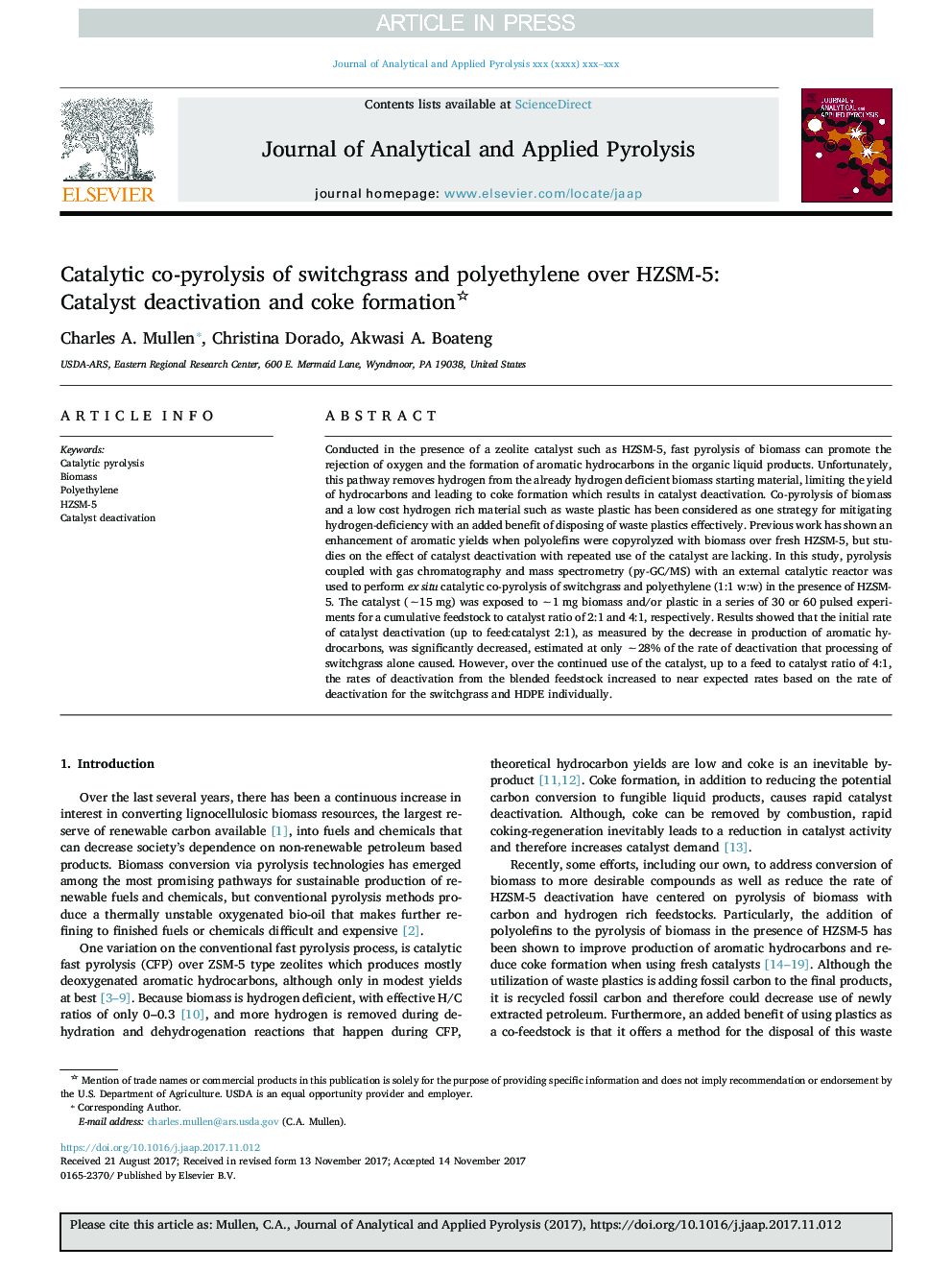| کد مقاله | کد نشریه | سال انتشار | مقاله انگلیسی | نسخه تمام متن |
|---|---|---|---|---|
| 7606476 | 1492948 | 2018 | 9 صفحه PDF | دانلود رایگان |
عنوان انگلیسی مقاله ISI
Catalytic co-pyrolysis of switchgrass and polyethylene over HZSM-5: Catalyst deactivation and coke formation
دانلود مقاله + سفارش ترجمه
دانلود مقاله ISI انگلیسی
رایگان برای ایرانیان
کلمات کلیدی
موضوعات مرتبط
مهندسی و علوم پایه
شیمی
شیمی آنالیزی یا شیمی تجزیه
پیش نمایش صفحه اول مقاله

چکیده انگلیسی
Conducted in the presence of a zeolite catalyst such as HZSM-5, fast pyrolysis of biomass can promote the rejection of oxygen and the formation of aromatic hydrocarbons in the organic liquid products. Unfortunately, this pathway removes hydrogen from the already hydrogen deficient biomass starting material, limiting the yield of hydrocarbons and leading to coke formation which results in catalyst deactivation. Co-pyrolysis of biomass and a low cost hydrogen rich material such as waste plastic has been considered as one strategy for mitigating hydrogen-deficiency with an added benefit of disposing of waste plastics effectively. Previous work has shown an enhancement of aromatic yields when polyolefins were copyrolyzed with biomass over fresh HZSM-5, but studies on the effect of catalyst deactivation with repeated use of the catalyst are lacking. In this study, pyrolysis coupled with gas chromatography and mass spectrometry (py-GC/MS) with an external catalytic reactor was used to perform ex situ catalytic co-pyrolysis of switchgrass and polyethylene (1:1Â w:w) in the presence of HZSM-5. The catalyst (â¼15Â mg) was exposed to â¼1Â mg biomass and/or plastic in a series of 30 or 60 pulsed experiments for a cumulative feedstock to catalyst ratio of 2:1 and 4:1, respectively. Results showed that the initial rate of catalyst deactivation (up to feed:catalyst 2:1), as measured by the decrease in production of aromatic hydrocarbons, was significantly decreased, estimated at only â¼28% of the rate of deactivation that processing of switchgrass alone caused. However, over the continued use of the catalyst, up to a feed to catalyst ratio of 4:1, the rates of deactivation from the blended feedstock increased to near expected rates based on the rate of deactivation for the switchgrass and HDPE individually.
ناشر
Database: Elsevier - ScienceDirect (ساینس دایرکت)
Journal: Journal of Analytical and Applied Pyrolysis - Volume 129, January 2018, Pages 195-203
Journal: Journal of Analytical and Applied Pyrolysis - Volume 129, January 2018, Pages 195-203
نویسندگان
Charles A. Mullen, Christina Dorado, Akwasi A. Boateng,